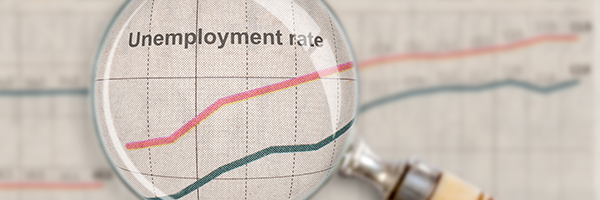FQVLF

June 22, 2023 | Daily JAM, FQVLF, Mid Term |
This week’s Quick Pick is First Quantum Minerals (FQVL). I’ve talked about copper as an equity kicker in gold mining stocks in a previous video. Barrick, a huge gold producer, is also a significant copper producer and is looking to expand its copper production. The company is currently in “informal talks” with First Quantum Minerals. Year to date, First Quantum Minerals is up 21% and 34% in the last three months, so it definitely shows good short-term momentum. In the long term, copper demand will see tremendous growth in the global climate change economy, including in electric vehicle production. The other benefit here is copper and, of course, gold is a good hedge against inflation which I predict will continue higher than the Federal Reserve and consumers would like for quite some time. Put copper, with its growth potential, together with gold, with its role as an inflation hedge, in one mining stock and you’re starting to look at something good.

March 8, 2023 | Daily JAM, FQVLF, Millennial, SCCO |
First Quantum Minerals (FQVLF) has reached an agreement on a new concession contract with Panama’s government over its huge Cobre Panama copper mine. The agreeent, assuming tht a final signing goes ahead, would end a months-long dispute that has halted ore processing and export shipments. The Cobre Panama mine accounted, before the dispute, for 1.5% of global copper production.

October 5, 2022 | Daily JAM, FCX, FQVLF, SCCO |
Copper gained after the London Metal Exchange said it will restrict new deliveries of the metals from Russia’s Ural Mining & Metallurgical Co. and one of its subsidiaries.

May 17, 2022 | ALB, Daily JAM, DAL, DE, DIS, FQVLF, Long Term, MRVL, NVDA, PFE, SCCO, USB, Volatility |
In my weekend Saturday Night Quarterback I said that this week would, probably, answer the question of whether Friday’s big bounce was just a bounce, the start of a buy on the dip rally, or even a bear market rally with a bit of staying power. Two days into the week I think the market action is moving in favor of a bear market rally, one of those often quite powerful upside moves that punctuate extended bear markets.

May 9, 2022 | Daily JAM, FQVLF |
With copper and nickel prices near all-time highs and fears that the rapid growth of production of battery-powered cars would result in a severe nickel shortage, on Sunday First Quantum Minerals (FQVLF) announced that t would expand it Kansanshi copper mine in Zambia and begin work on the new open pit nickel Enterprise mine.

May 2, 2022 | CMI, Daily JAM, DNNGY, ES, FQVLF, JCI, LICY, Long Term, SCCO, Special Reports, Top 50 Stocks |
All you have to do to find the high profits that will make the risk of investing in climate change stocks worthwhile is to focus on sectors (1) where the rewards are solid and the risk is quantifiable, (2) where companies are making profit the old-fashioned way by building out networks and then charging high rents to use them, by (3) carefully targeting a few technologies (wind and solar and hydrogen and electric cars) that will be part of any mix of solutions, and (4) by investing in bottlenecks that are likely to drive prices up (and provide good profits for companies that resolve the bottleneck.

January 12, 2022 | Daily JAM, FQVLF, Millennial, Stock Alerts |
Copper prices rose 3.54% on the London Metals Exchange today to $10,064 a metric ton. And that looks like just the beginning of a classic commodity run based on supply shortages in the copper industry and increases in demand from growth in electric cars and renewable energy technologies. Inventories at the London Metals Exchange now sit at multi-year lows. Goldman Sachs recently increased its forecast for copper to $12,000 a metric ton and sees a 20% upside for copper in 2022. Bank of America recently put a $20,000 price target on copper by 2025. Today, January 12, copper stocks were on the march.

November 2, 2021 | Daily JAM, FCX, FQVLF, Jubak Picks, NJDCY, SCCO, Top 50 Stocks, Volatility, VWAPY |
When I started Special Report for how to Buy on the Dip, What to Buy on the Dip and When to Buy on the Dip I was only looking to have three strategies (and 10 picks). The more I look at the current market, the more complex it seems with more moving parts that could generate an Oh, No! moment for this stock or that stock. Which is why I’ve added a fourth strategy, one I’m calling “The China bomb” and four more picks to my Buy on the Dip Special Report.

October 13, 2021 | ALB, CRWD, Daily JAM, FQVLF, OKTA |
If you look only at the major indexes, today was a mildly positive day. The Standard & Poor’s 500 closed up 0.30%, although the Dow Jones Industrial Average was flat. The NASDAQ Composite gained 0.73% at the close and the NASDAQ 100 added 0.77%. The small cap Russell 2000 ended ahead 0.34%. But take a look at some of the frankly outlandish gains in the market’s hottest sectors. It’s not difficult to find gains of 5% or more today

September 22, 2021 | Daily JAM, FQVLF, Morning Briefing, Top 50 Stocks, VWAPY |
I’d call the policy being followed by the People’s Bank in the China Evergrande crisis “Try to support the markets but see how little we can get away with.” Today Chins’s central bank supplied liquidity to the country’s financial markets with an injection of short-term cash. But the move fell far short of the kind of “Charge of the People’s vanguard” that the bank has mustered in earlier crises. And, importantly, there was no big statement of market support to go with today’s actions.

June 23, 2021 | COPX, Daily JAM, Dividend Income, FCX, FQVLF, Jubak Picks, Millennial, SCCO, Top 50 Stocks |
Copper stocks have been moving steadily higher recently in anticipation of a turn in the eight week downward trend in the price of copper itself. Today, the price of copper is showing some of the upward movement that the rally in copper stocks anticipated.

January 28, 2021 | AG, Daily JAM, DIS, FCX, FQVLF, GDX, GOLD, Jubak Picks, MGM, Morning Briefing, SCCO, Top 50 Stocks |
U.S. GDP growth slowed in the fourth quarter, gaining just 1% from the third quarter. For the full year the U.S. economy contracted by 3.5%. That makes 2020 the first time that the economy has contracted for a full year since 2009 and the Great Recession. At the bottom of that recession that economy contracted by 2.5%. 2020 is also the worst year for economic growth since 1946 when the economy shrank by 11.6% as the country demobilized after World War II. Consumer spending slowed in all 15 categories tracked by the Bureau of Economic Analysis. The sectors that had powered the recovery in the third quarter–restaurants and hotels, for instance–reversed. The growth in spending on cars and health car also slowed from the acceleration in the third quarter. So why is this good news as far as the stock market is concerned?












